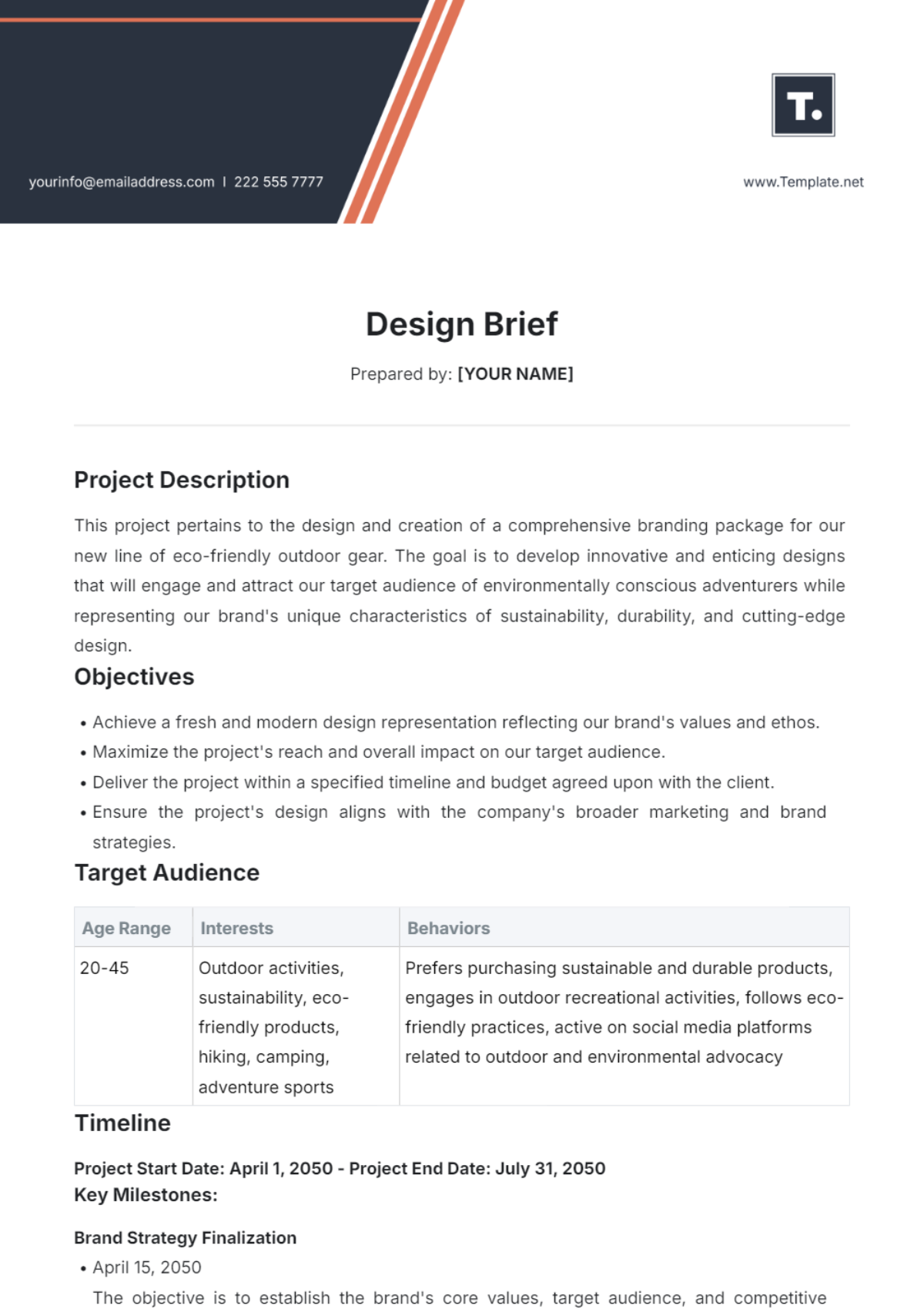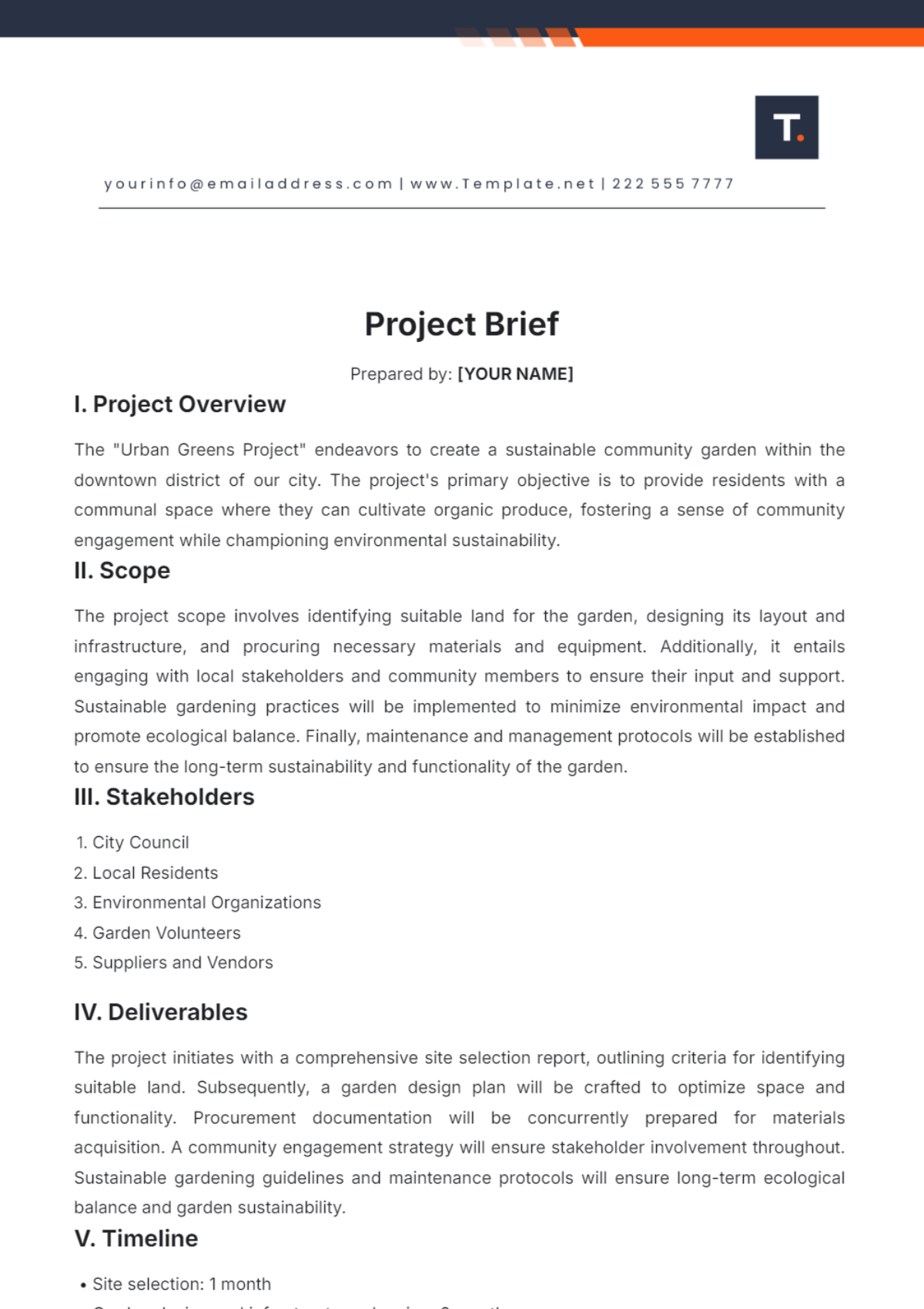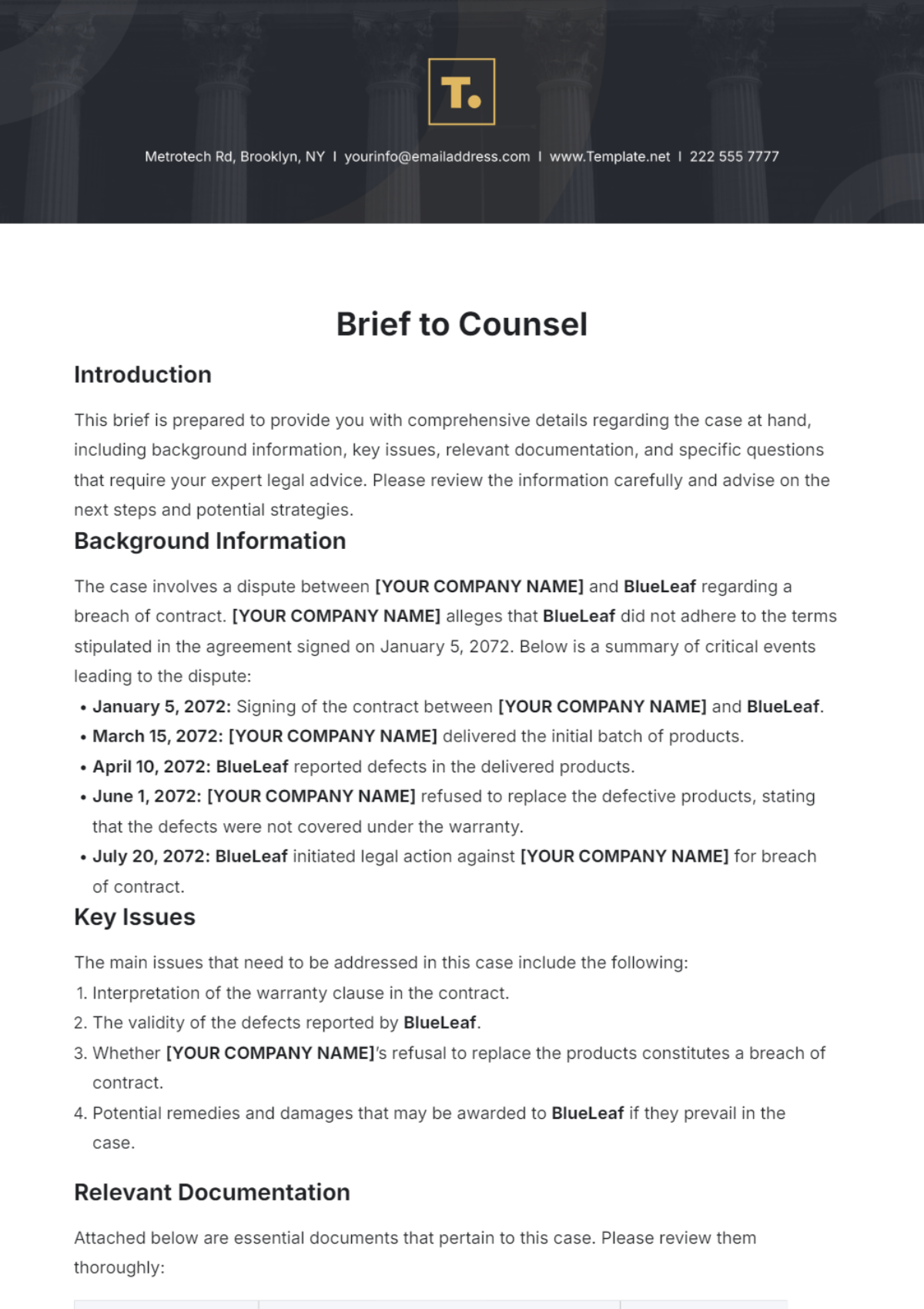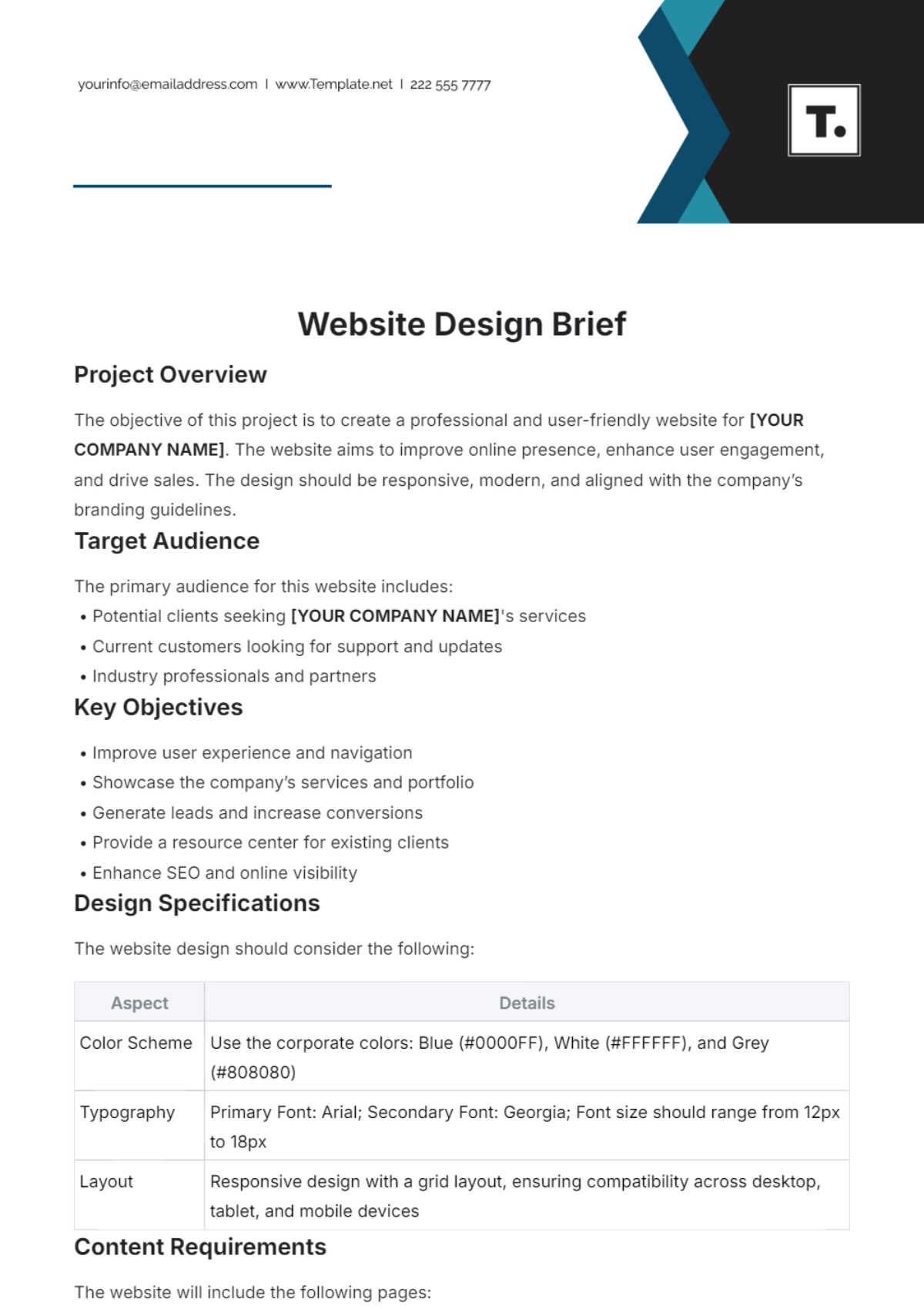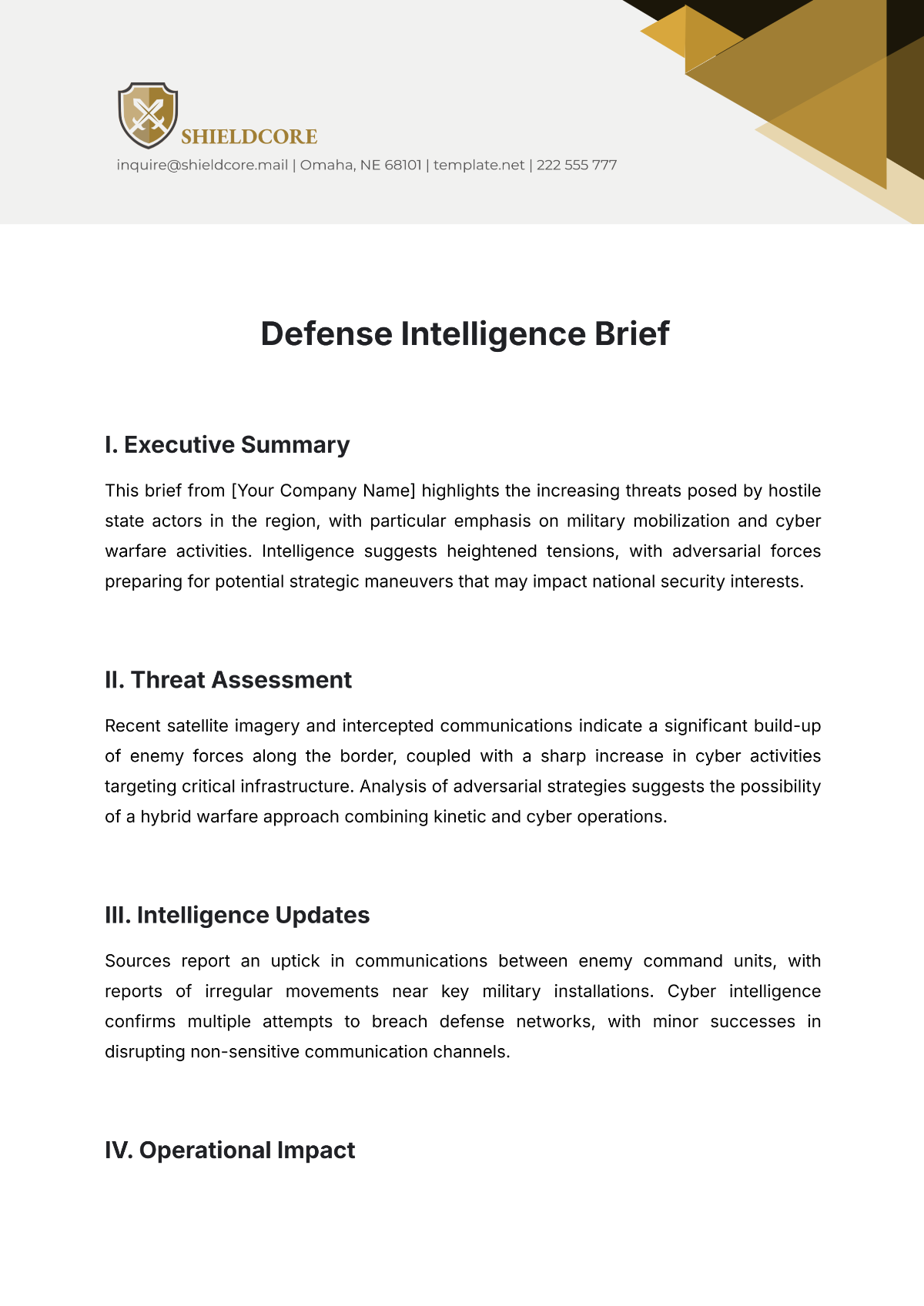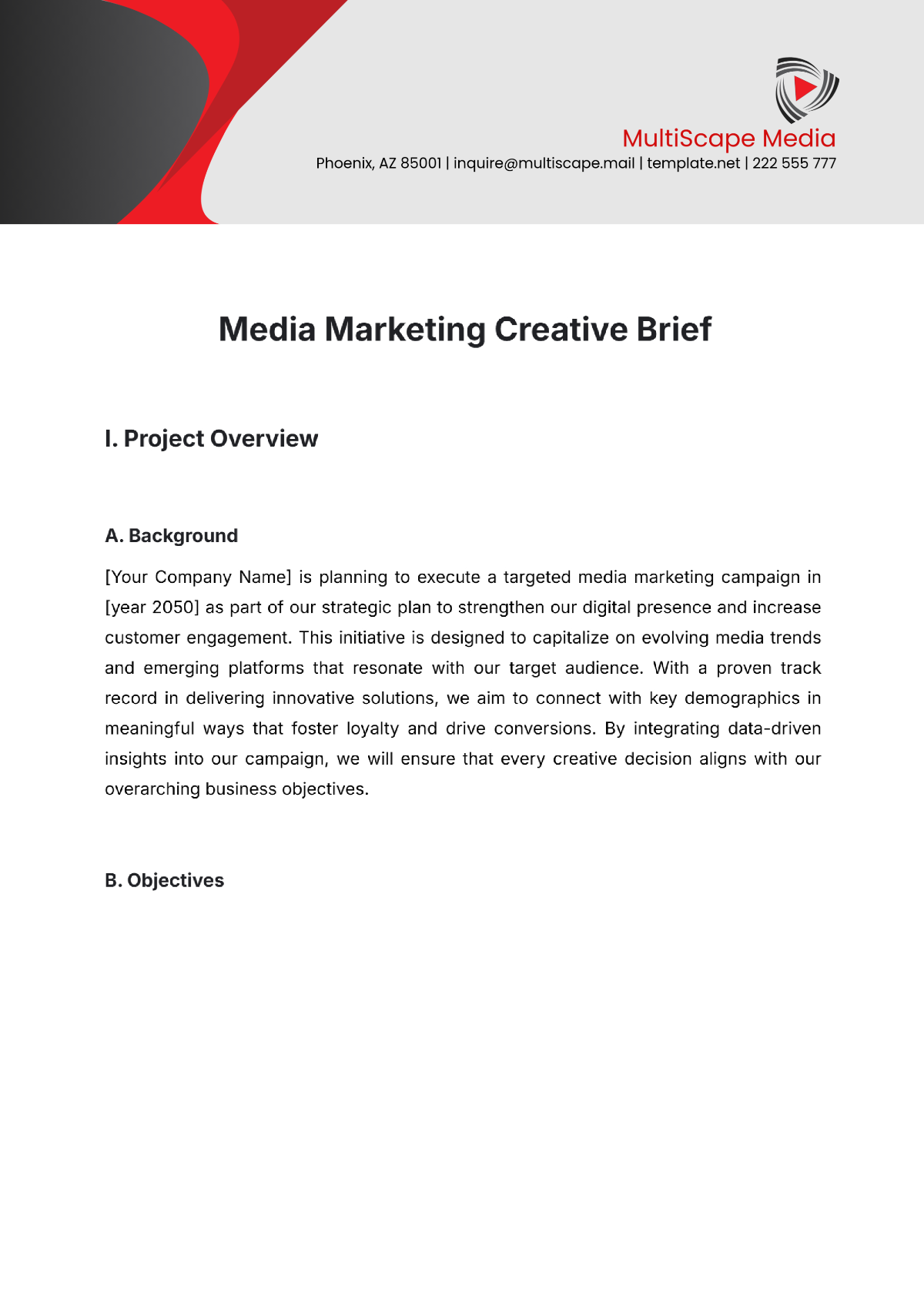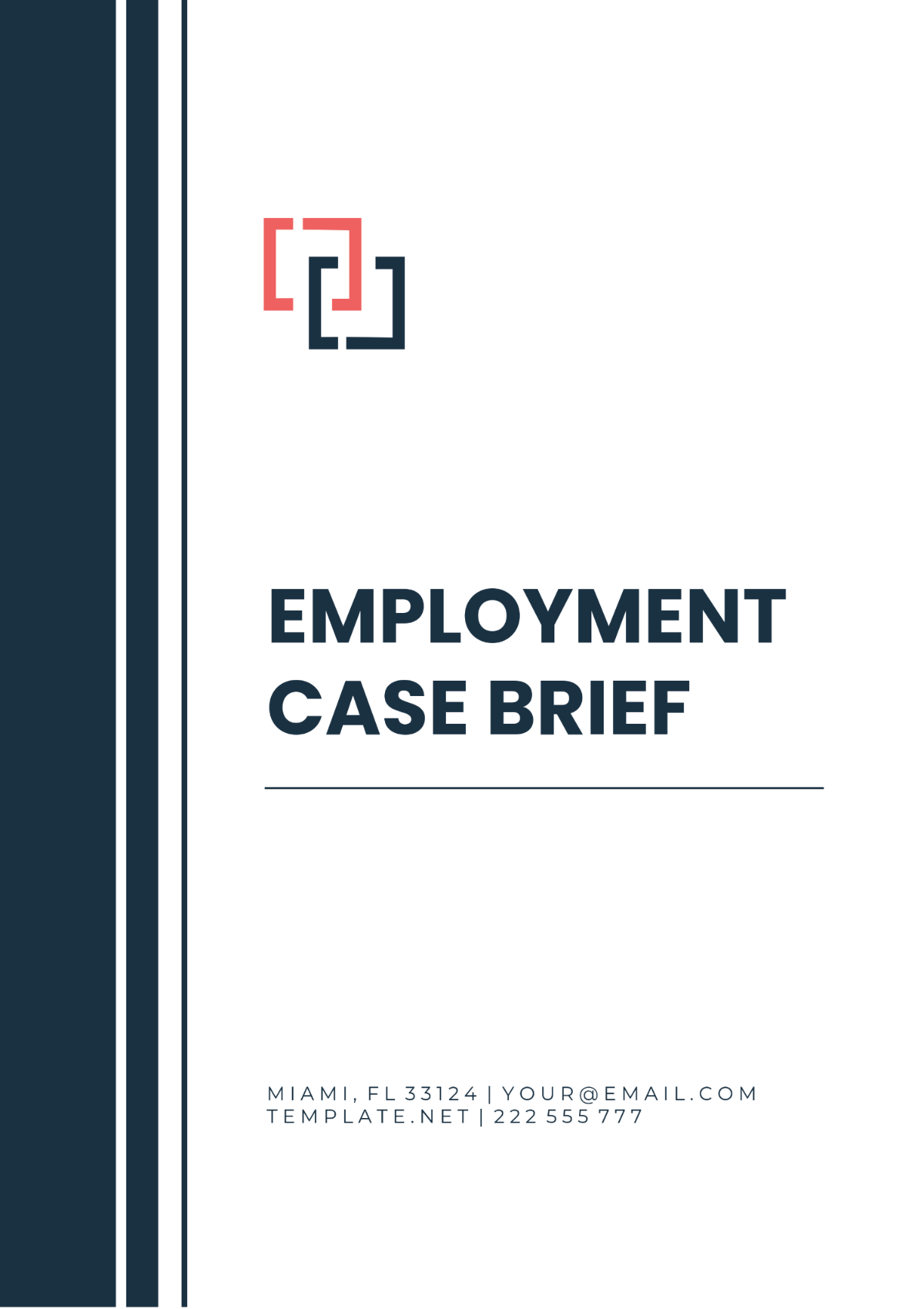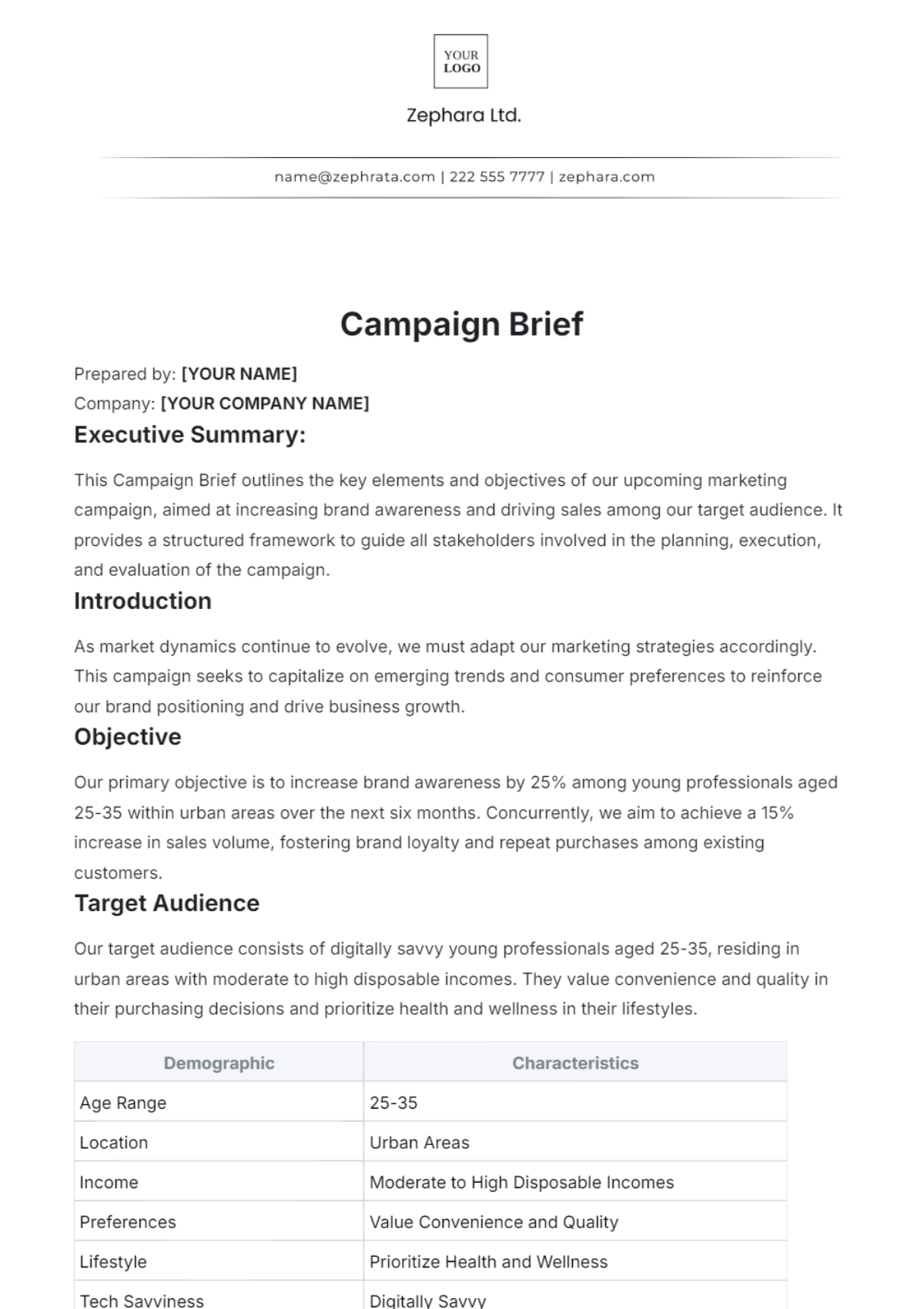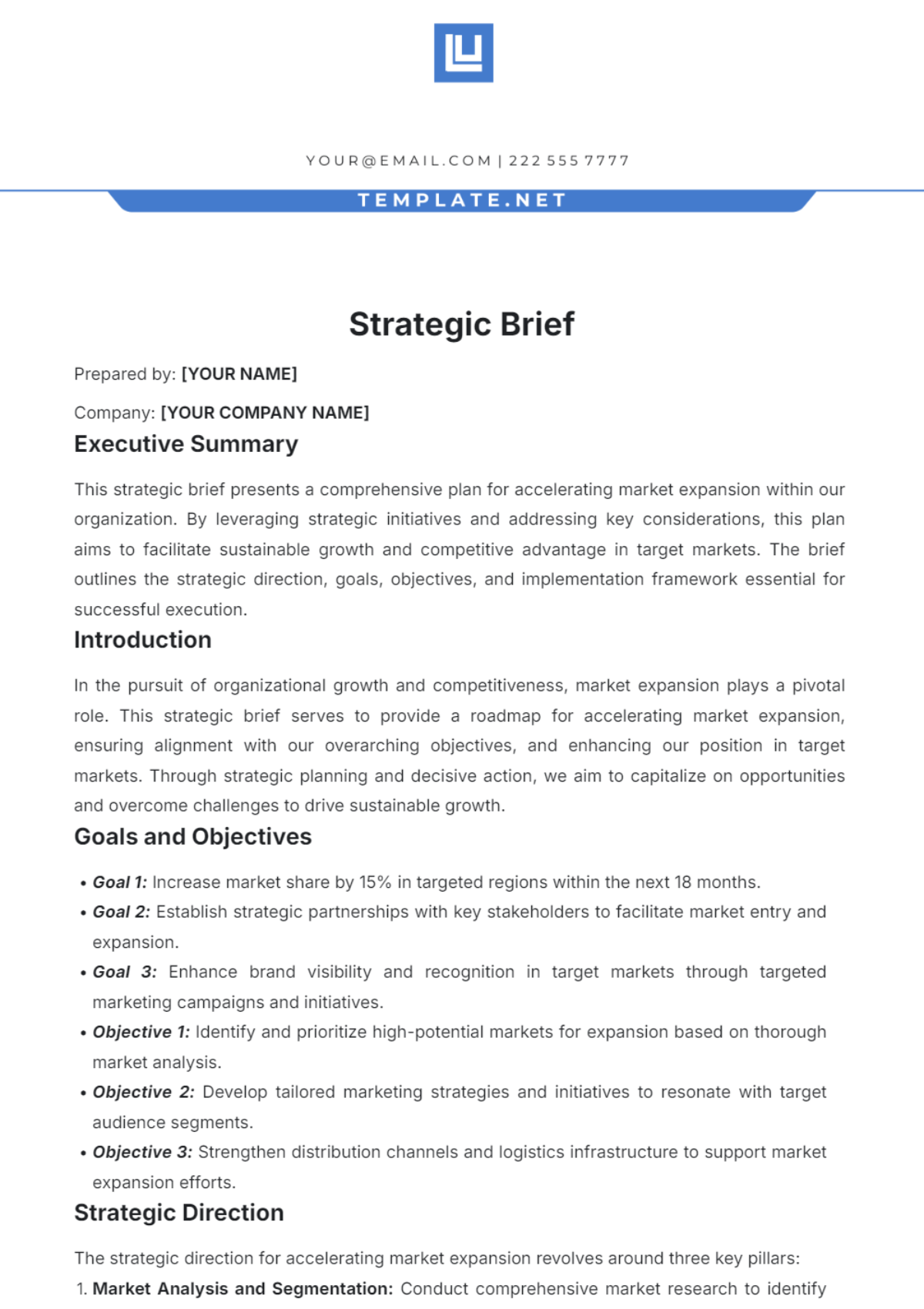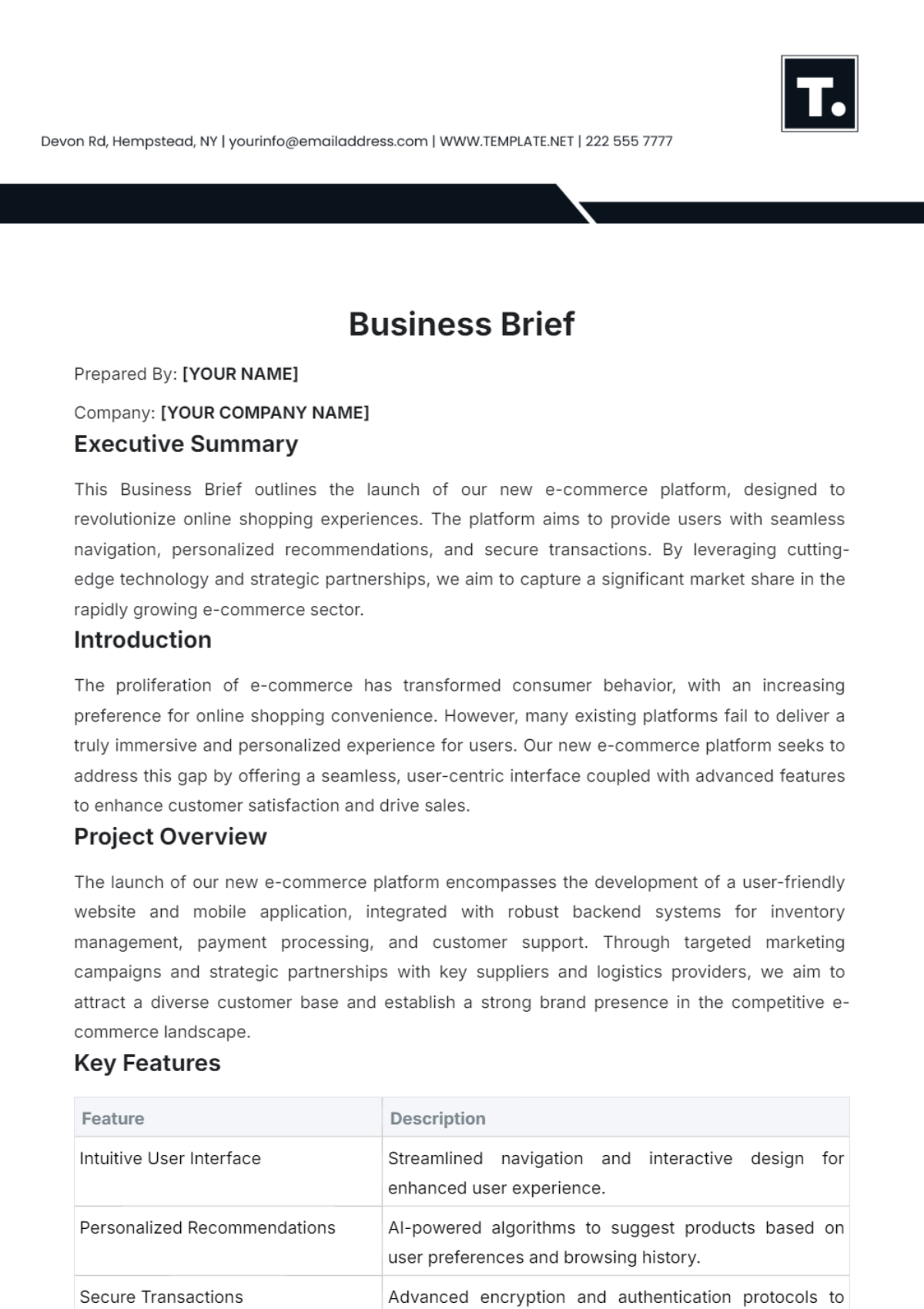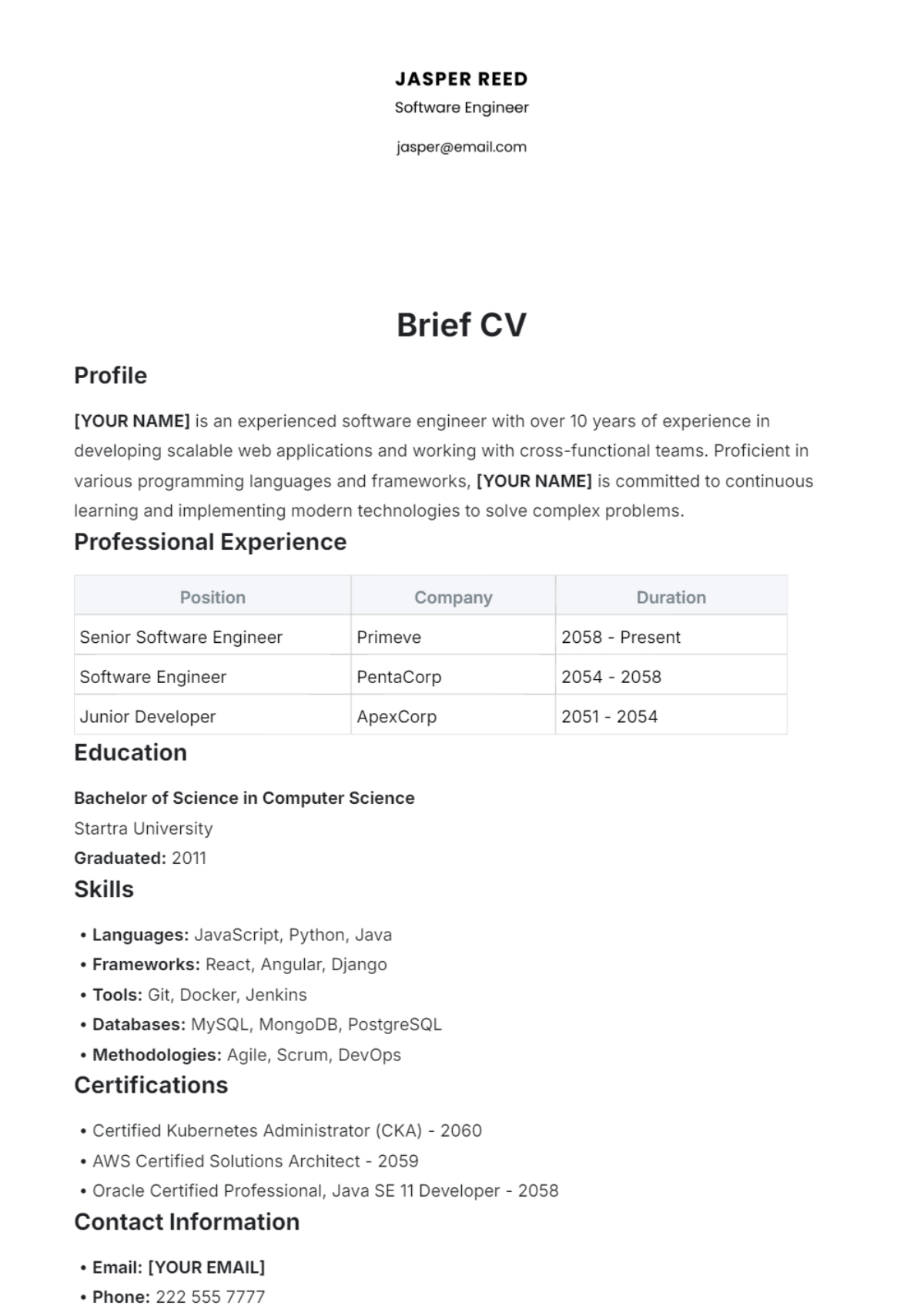Time Management Data Brief
Prepared by [YOUR NAME] for [YOUR COMPANY NAME]
Executive Summary
This document presents an analysis of time management practices within our organization, aiming to provide insights into current efficiencies and areas for improvement. The methodology employed involved data collection from various departments, analyzing the distribution of time spent on essential and non-essential tasks, as well as time allocated to meetings and training.
Key Findings:
Time Allocation: The analysis revealed that a significant portion of employees' time is dedicated to non-essential tasks and meetings, potentially impacting productivity and goal attainment.
Training Time: While training is essential for skill development, the percentage of time spent in training sessions was found to be lower than optimal, suggesting a need for increased investment in professional development opportunities.
Departmental Disparities: Variations in time management practices were observed across different departments, highlighting the importance of tailored interventions and support mechanisms.
Recommendations:
Prioritize Essential Tasks: Encourage employees to prioritize essential tasks over non-essential ones to optimize productivity and focus on goal-oriented activities.
Streamline Meetings: Implement strategies to reduce the frequency and duration of meetings, ensuring that they remain productive and goal-driven.
Enhance Training Programs: Invest in comprehensive training programs tailored to individual employee needs, fostering skill development and organizational growth.
Departmental Support: Provide targeted support and resources to departments with identified time management challenges, promoting consistency and efficiency across the organization.
By implementing these recommendations and fostering a culture of effective time management, our organization can enhance productivity, achieve strategic objectives, and maintain a competitive edge in the market.
Methodology
Data Collection: The methodology involved collecting quantitative and qualitative data on time management practices from employees across various departments within the organization. This data was gathered through surveys, interviews, and time-tracking tools.
Survey Design: A structured survey questionnaire was designed to capture information on the allocation of time to different tasks, including essential and non-essential activities, meetings, and training sessions. The survey also included open-ended questions to gather insights into individual challenges and preferences related to time management.
Interview Sessions: In addition to the surveys, interviews were conducted with select employees and department heads to delve deeper into specific time management practices, identify underlying factors contributing to inefficiencies, and gather suggestions for improvement.
Time Tracking: To complement the survey and interview data, time-tracking tools were utilized to gather objective data on the actual time spent by employees on various tasks. This provided a more accurate understanding of time allocation patterns and helped validate self-reported data.
Data Analysis: The collected data was analyzed using both quantitative and qualitative methods. The quantitative analysis involved calculating percentages of time spent on different activities, identifying trends, and comparing results across departments. Qualitative analysis involved thematic coding of interview transcripts and survey responses to identify common themes, challenges, and recommendations.
Cross-Validation: To ensure the reliability and validity of the findings, cross-validation techniques were employed, such as comparing self-reported data with objective time-tracking data and triangulating information from multiple sources (surveys, interviews, time-tracking).
Departmental Involvement: The methodology included active involvement and participation from representatives of different departments to ensure comprehensive coverage and insights into department-specific time management practices.
By employing this multi-faceted methodology, the analysis aimed to provide a holistic understanding of time management practices within the organization, identify key findings and develop targeted recommendations for improvement.
Findings and Analysis
Time Allocation: The analysis revealed that a considerable portion of employees' time is allocated to non-essential tasks, such as administrative work, responding to emails, and attending to ad-hoc requests. On average, employees were spending approximately 40% of their time on non-essential activities, which could potentially detract from the focus on strategic goals and core responsibilities.
Meetings: The data indicated that a significant amount of time was dedicated to meetings across departments. On average, employees were spending around 30% of their working hours in meetings. While meetings are essential for collaboration and decision-making, the high frequency and duration of meetings observed in the analysis may be impeding productivity and detracting from the time available for task completion.
Training Time: The percentage of time allocated to training sessions was found to be lower than optimal, with employees spending approximately 5% of their working hours in training. This suggests a potential gap in professional development opportunities and may hinder employees' ability to acquire new skills and stay updated with industry trends.
Departmental Disparities: Variations in time management practices were observed across different departments. Some departments exhibited more efficient time allocation patterns, with a higher proportion of time spent on essential tasks and fewer hours dedicated to non-essential activities and meetings. Conversely, other departments showed a greater need for improvement, with higher percentages of time allocated to non-essential tasks and meetings.
Analysis of these findings suggests several potential implications for the organization:
Productivity Impact: The significant amount of time spent on non-essential tasks and meetings may impact overall productivity and hinder progress toward organizational goals. Streamlining these activities and reallocating time towards essential tasks could lead to improved efficiency and performance.
Employee Engagement: Insufficient time allocated to training sessions may result in decreased employee engagement and skill stagnation. Investing in comprehensive training programs tailored to employees' needs can foster professional growth and enhance job satisfaction.
Departmental Effectiveness: Addressing departmental disparities in time management practices is crucial for promoting consistency and efficiency across the organization. Tailored interventions and support mechanisms may be necessary to address specific challenges and optimize time utilization within each department.
Recommendations
Training and Workshops on Effective Time Management:
Implement regular training sessions and workshops focused on enhancing employees' time management skills.
Provide resources and tools to help employees prioritize tasks, manage their time effectively, and minimize time-wasting activities.
Offer tailored training programs for managers and team leaders to empower them with the skills to support their teams in optimizing time utilization.
Revisions in Meeting Culture to Make Them More Productive:
Evaluate the necessity and effectiveness of existing meetings, aiming to reduce unnecessary meetings and streamline agendas.
Implement guidelines for conducting efficient meetings, including setting clear objectives, establishing time limits, and ensuring active participation.
Encourage alternative communication methods, such as asynchronous communication tools, to minimize the need for frequent face-to-face meetings.
Establishing a Better Task Tracking System:
Implement a robust task-tracking system to help employees prioritize tasks, set deadlines, and monitor progress.
Utilize project management tools or task management software to centralize task assignments, facilitate collaboration, and provide visibility into project timelines and responsibilities.
Regularly review and update the task-tracking system to ensure alignment with organizational goals and evolving priorities.
Employee Feedback Integration:
Establish mechanisms for soliciting regular feedback from employees on time management practices, including surveys, suggestion boxes, or feedback sessions.
Actively incorporate employee input into decision-making processes related to time management initiatives, fostering a culture of continuous improvement and employee engagement.
Recognize and reward innovative time management ideas and initiatives proposed by employees, encouraging ownership and accountability for time optimization.
Enhancing Digital Infrastructure for Improved Time Management:
Invest in upgrading digital tools and infrastructure to support efficient time management practices.
Provide access to integrated productivity tools, such as calendar apps, task management software, and collaboration platforms, to streamline communication and task coordination.
Offer training and support to ensure employees are proficient in utilizing digital tools effectively for time management purposes.
By implementing these recommendations, the organization can foster a culture of effective time management, enhance productivity, and achieve better outcomes across departments. Continuous monitoring and evaluation of these initiatives will be essential to ensure ongoing improvement and alignment with organizational goals.
Conclusion
In summary, this document has provided a comprehensive analysis of time management practices within our organization, highlighting key findings and insights to guide future improvements. The analysis revealed significant opportunities to enhance efficiency, productivity, and overall performance through better time management.
The findings underscore the critical importance of effective time management in achieving organizational goals and maintaining competitiveness in today's fast-paced business environment. By optimizing time allocation, streamlining meeting practices, and investing in employee training and digital infrastructure, the organization can unlock substantial benefits and drive sustainable growth.
Implementing the recommendations outlined in this document represents a crucial step toward realizing these benefits. Training and workshops on effective time management will empower employees with the skills and tools necessary to prioritize tasks and maximize productivity. Revisions in meeting culture will ensure that valuable time is spent on meaningful collaboration and decision-making. Establishing a better task-tracking system and integrating employee feedback will facilitate continuous improvement and accountability in time management practices. Additionally, enhancing digital infrastructure will provide the necessary support for efficient communication, collaboration, and task management.
By embracing these recommendations, the organization can expect to see tangible improvements in productivity, employee engagement, and overall performance. With better time management practices in place, we can achieve greater efficiency in task execution, faster decision-making, and improved alignment with strategic objectives.
Moving forward, the organization should prioritize the implementation of these recommendations and establish mechanisms for monitoring and evaluating their effectiveness. Continuous refinement of time management initiatives will be essential to adapt to evolving organizational needs and market dynamics.
In closing, by recognizing the importance of effective time management and taking proactive steps to address areas of improvement, our organization can position itself for sustained success and growth in the future. Together, we can unlock our full potential and achieve excellence in all endeavors.
